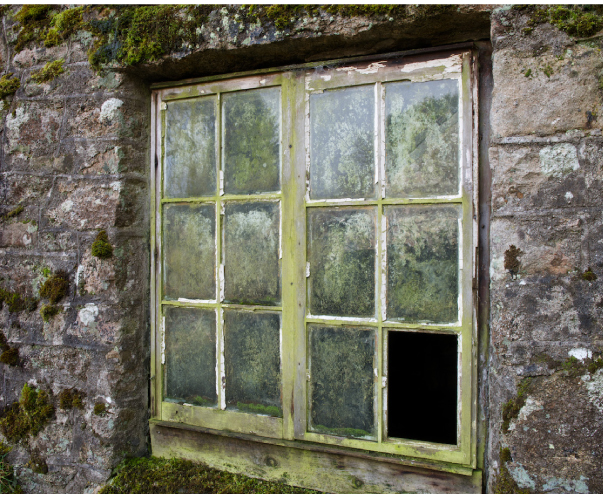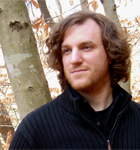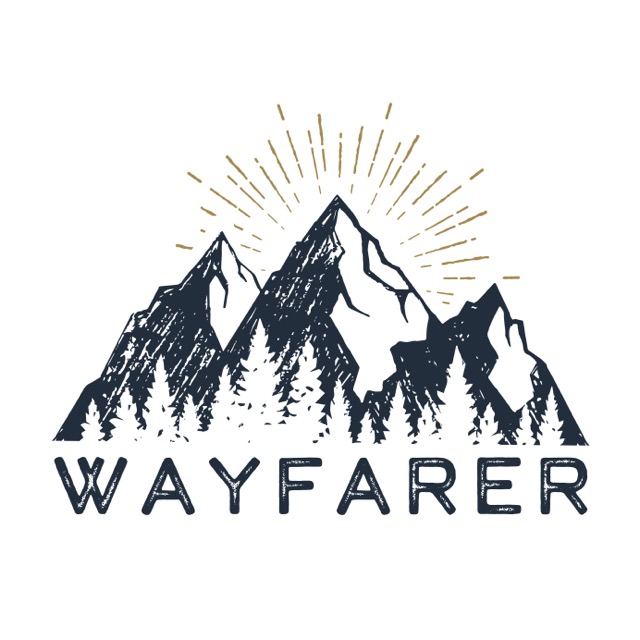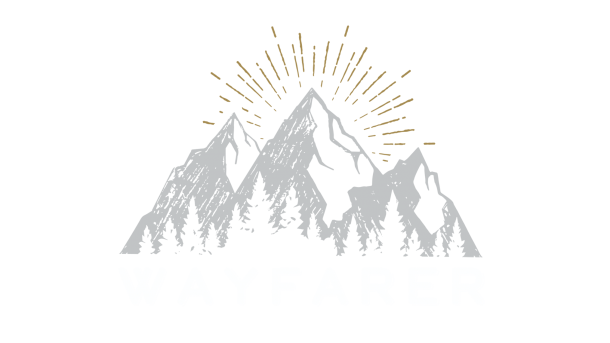Rewilding Column by staff writer Jason Kirkey • Feature Photographer: Duncan George
Appears in the Spring 2016 Issue of The Wayfarer. Order a print or the full e-edition here»
There is a glen in Ireland. The entrance is difficult to find—you have to know what you’re looking for. As you walk the path, steep cliffs carved by a glacier into the bedrock rise up gradually around you until they tower above you like walls. Upon entering the glen, you might feel as though you are entering into a folktale, as though if you linger too long at dusk then you might never be seen or heard from again—until years later you emerge, young as the day you disappeared. When you step out of the glen, you cannot be sure that the folktale won’t follow you.
There is a mountain in Ireland. The mountain is called Knocknarea, a lone summit in County Sligo that is topped with a 5,000-year-old cairn said to be the tomb of the goddess Méabh. I emerged out of the glen, a folktale following behind me, to see my friend Frank clambering up the steep slope of Knocknarea. I followed him through brambles and shrubs as he pointed out to me a crack in the side of the mountain. The crack was narrow, just large enough to look through. I expected to see nothing but darkness, but a narrow passage extended a little ways in and then opened up around a corner into what looked like a small chamber.
There was a light inside the mountain.
The chamber was illuminated as if just opposite the narrow crack and around the corner there was a sunlit opening. I looked around. Frank, too, was searching the hillside for another opening where the light might be spilling in from. We found nothing.
Later that evening, a folklorist told us that the crack in the mountain was known. According to the stories it is an entrance to an otherworld country that lies beneath and within the mountain. That’s what the stories say. No doubt, if you search thoroughly you could find the other end—the hidden passage through which the sun pours in. But you may well be poorer for finding it if you settle on this discovery as a complete account of reality.
There is light, shadow, and wildness in the stone heart of the mountain. There is light, shadow, and wildness in the human heart as well. Sometimes the only way to reach that light is through a story. Sometimes you have to let the mantle of reason drop from your shoulders and undergo what people undergo in a folktale. Sometimes you have to think not just like a mountain, as Aldo Leopold instructed, but like the light inside the mountain.
There is a story in Ireland. It tells of an otherworld realm, the entrance to which is a cairn, like the one atop Knocknarea. Within this realm lies Connla’s Well, the well that was the source of all wisdom and inspiration. Around the well there were nine hazel trees—trees of knowledge. The hazelnuts fell and disturbed the wooded silence that surrounded the well; they fell into the water, floating and bobbing in the light and shadow of the trees. Salmon swam in the water, their bellies purple with the juice of hazelnuts. The salmon swam in wisdom and ate knowledge. The flesh of these salmon would imbue whoever tasted them with all the wisdom they had consumed.
Nechtan, who ruled this realm, had forbidden anyone from entering—his wife, Boann, included. But Boann would not be kept out. She conspired to sneak within and see this well for herself. Once within, she challenged the waters by walking counterclockwise around it. This was a breach of etiquette. The water rose up in three successive waves. It broke her left arm, her left leg, and blinded her in her left eye before pursuing her across the landscape. Boann ran all the way to the eastern shore of Ireland. The water followed close behind at every step, carving a river as it went. Finally at the shore, Boann could run no more and the waters drowned her as they flowed into the sea. Ever since, rivers have flowed from Connla’s Well: this one was called the Boyne, after Boann.

The Irish landscape is full of stories that mythically explain the formation and naming of different features—rivers, mountains, lakes, and plains. I have stood on the edge of the River Boyne. In many respects it is only a river. Much as the crack in the side of the mountain was only a crack in the rock, and the light inside the mountain was merely sunlight pouring in through some unseen hole. The significance of the river cannot be seen with the right eye of reason. But that is not the only eye with which to see a river.
Seen another way—through Boann’s left eye, the eye she was blinded in for her trespass—the river is a story as much as it is water and fish and gravel. Stories are doorways, like the path into the Sligo glen; they lead to a penumbral place where the heart of the mountain and the heart of the human are one. They lead, in other words, into wildness. The right eye sees the stone and light; it sees the hidden hole where the light shines through, but it does not see the invisible country in the mountain’s heart. Only Boann’s left eye sees that.
Stories can tell us things about places in ways that empiricism remains mute. We can plumb the depths of the mountain with all manner of tools and gadgets, come to know which stones it is made of, how it formed, and how it has eroded over time. We can know precisely how the light gets in. But we cannot know without story what the place means, how to come into relationship with it, and how it is perceived by those people whose minds have been shaped by its shadow. We would become anemic on a diet of data and statistics alone. Poetry and meaning are essential nutrients in the food web as well. We have to eat stories to live. Without stories we cannot know what the light inside the mountain means—only that it is there.
There is a purple-bellied salmon in the Boyne River. For seven years, the druid Finn Eces tried to catch the salmon. Eventually, frustrated with the effort, he took on a young apprentice: Fionn mac Cumhaill. Together, they caught the salmon in Linn Feic, a deep pool in the river. They cleaned it by the water and stuck it on a stick to roast over the open fire. Finn Eces excused himself and instructed Fionn to continue cooking the salmon by slowly and evenly turning it over the flame. “But do not,” he warned him, “by any means taste one morsel of its flesh, one drop of its juice.” After a time, Fionn touched the salmon to check if it was cooked. His thumb burned on the searing flesh, and he brought it to his mouth instinctively. He tasted the juice of the salmon. Finn Eces returned. He saw wisdom in young Fionn’s eyes, a wisdom that was previously absent. He knew immediately that Fionn had tasted the salmon—the fish was never meant for him. He gave Fionn the rest of the pink-fleshed fish to eat, and as he did Fionn was filled with the wisdom of the world.
Stories are food. They feed the depths of us, where we are wild. What happens in this story is a version of what we must do to be nourished by the wildness inside our own humanity. To hear and see such stories is to be shaped by them, to be made part of their story and so part of their ecology of meaning. A food web is a story that holds an ecology together as a community. Myth hold things together in less visible ways. We know how the hawk and rabbit relate—they are predator and prey. We know how the salmon and river relate—they are inhabitant and habitat. Each tells a story together. The visible drama of such stories we call ecology; the invisible drama of meaning we call myth. There are modes of listening to the earth, paying meditative and focused attention, that are consonant with the kind of listening that is required by stories. It is from that listening to the earth that myths come, and it is by that listening to what the earth and myths say that we might become wild. We might, like a myth, become animal; we might, like the earth, become soil. But we have to dig for it.
There is a sod of peat I keep sitting on a wooden table, surrounded by other found objects—acorns, pinecones, a small shimmering stone shaped by a waterfall. I stole it from a fire-side basket at my lodgings in the Wicklow Mountains and smuggled it back into the United States. Mea culpa. But there it sits: a piece of landscape older than history. Now and again, when my head fills with folklore, I knock off a small corner of the brick and burn it like incense.
The bogs have been forming for 360 million years, although most modern bogs date back to around 10,000 years ago when the glaciers began to retreat at the end of the last ice age. Within them, natural history and human history are both composted and preserved. The acidic conditions of the peat, in addition to their lack of oxygen, make for an excellent preservative. The bodies of the dead—murdered, or sacrificed, or just plain buried—have been dug up, so preserved that the wrinkles of age can still be seen on their faces. Butter, the antlers of a stag, Iron Age swords, and holy relics from the early-Christian period have all been unearthed, dragged from the deep strata of the landscape’s mind and memory. Peat burns slowly. When it finally catches fire, the sod flares up and buzzes with all the electricity of time. Place your ear to a glowing brick removed from the roar of the fire and you can hear it.
There is a bog in our minds where myths and folktales live. Whatever wildness lives inside us, it is there, amidst all the cauldrons, swords, and bones, and amidst those stories that grow naturally, like heather, from all the compost of our minds. It lives inside us like the light inside the mountain. To make contact with this wildness we have to dig down into the bog and find a chalice of story to drink from. If you want to drink from this cup you have to go to the place the stories live: into the bog, into the light inside the mountain, into the wild. There is no path to rewilding that does not travel through wilderness.
Some stories are made of the Irish language, others of Navajo, and others still of English. But all stories are made of earth and the language all wild things speak. And just as a tree is made of the wood that is made by the tree, the earth is made from the stories that compose it and compost within it. The earth is made of places and places are made of story. Our minds, too, are made of such mud and moss. Dig deep enough down into the peat of the mind and these places are found strewn through us like holy books and artifacts of the past, or the wood of felled forests that recount the history of the land. Such places ground us to the particulars of their poetry. And deeper down still, down past the oldest folktale, there is a story that is made from the light inside the mountain where the heart of the earth and the heart of the human are one. Eat this story.
 Jason Kirkey is an author, poet, and the founder of Hiraeth Press. He grew up in the Ipswich River-North Atlantic Coast watershed of Massachusetts. Inspired by the landscapes in which he has lived—the temperate forests and old mountains of New England and the Eastern Piedmont, the red rocks and high desert of Colorado, Irish hills and sea—his work is permeated with an ecological sensibility. Whether poetry or prose, Jason’s words strive towards consonance with the ecosystem. He has written four volumes of poetry, including Estuaries and a nonfiction book, The Salmon in the Spring: The Ecology of Celtic Spirituality. Jason is now working on his second nonfiction book and a graduate degree in conservation ecology. He now lives near Boston.
Jason Kirkey is an author, poet, and the founder of Hiraeth Press. He grew up in the Ipswich River-North Atlantic Coast watershed of Massachusetts. Inspired by the landscapes in which he has lived—the temperate forests and old mountains of New England and the Eastern Piedmont, the red rocks and high desert of Colorado, Irish hills and sea—his work is permeated with an ecological sensibility. Whether poetry or prose, Jason’s words strive towards consonance with the ecosystem. He has written four volumes of poetry, including Estuaries and a nonfiction book, The Salmon in the Spring: The Ecology of Celtic Spirituality. Jason is now working on his second nonfiction book and a graduate degree in conservation ecology. He now lives near Boston.
The Wayfarer is released biannually each spring and autumn. We offer approximately 60% of each issue free to the public on our website. If you find yourself inspired by what you read here and would like to enjoy a full issue, you have a few options.
Print Edition: Individual print editions starting at $8.99 are available in our bookstore. Each print edition is full-color, perfect bound and printed on paper with chain of custody certification from the Forest Stewardship Council, Sustainable Forestry Initiative, and the Program for the Endorsement of Forest Certification. • Our Shop»
Full e-Edition: Complete e-editions are also available in our bookstore. In mere minutes and for less than a cup of tea you can be downloading the full PDF to your computer or favorite device. • Our Shop»
Print Subscription: We offer subscriptions to the print edition. When you subscribe to the print edition, you also receive the e-edition free! With each release, we will send you your copy of the print edition while at the same time sending you a secure link via email for you to download your e-edition! • Learn More»
e-Edition Subscription: If you are just interested in receiving the e-Edition, a 1yr e-subscription is the right step for you. For only $2.99 you can receive 2 issues of The Wayfarer’s e-Edition. Each spring and autumn, you will wake up to find a fresh issue of the journal waiting in your inbox. Download the PDF to your computer or favorite tablet device. • Learn More»

